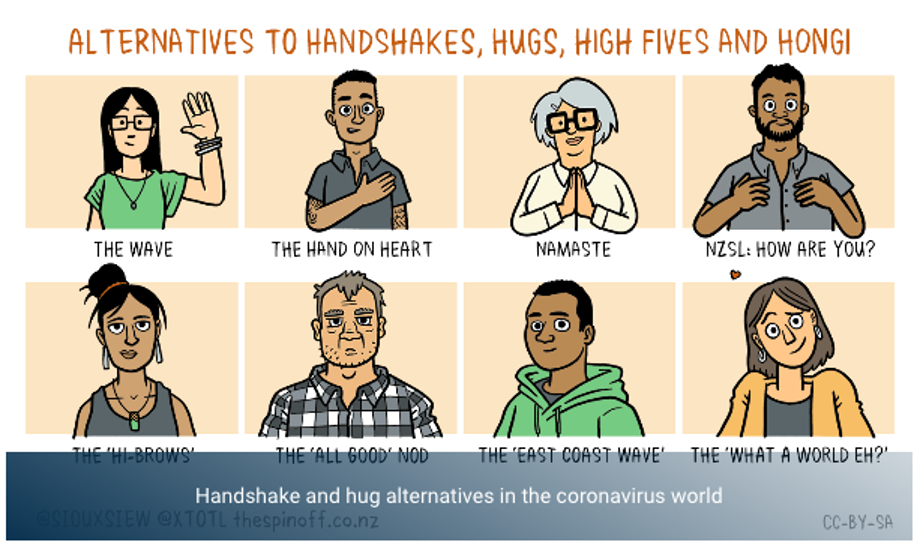Care For Others
Social Distancing
What is social distancing?
Social distancing is deliberately increasing the physical space between people to avoid spreading illness. Individuals need to stand at least 6 feet (approximately 2 meters) apart to limit virus spread.
Why is social distancing important?
Research indicates that respiratory droplets from an individual do not travel farther than 6 feet. By staying at least six feet away from other people, you will decrease your chances of catching or spreading COVID-19. Social distancing is important to consider in the workplace, at home, and in your neighborhood.
- Use simple social distancing tactics like replacing hugs and handshakes with alternatives …

Handshake and hug alternatives in the coronavirus world (Image: CC-BY-SA)
- Text, phone call, email, or teleconference individuals, especially if they live alone.
- Who should avoid wearing face coverings? Unsupervised young children, or persons who are unable to remove the mask on their own should not be wearing a mouth and nose covering without supervision.
Environmental Impact
- Please consider the Environmental Impact of Personal Protective Equipment (PPE):
- Single-use PPE is largely made of polymers derived from fossil fuels; these are not biodegradable or recyclable
- Most PPE waste goes to regular landfill; hospitals may use incineration; both are problematic environmentally
- Increased demand for PPE has led to increased burdens on waste supply chains; increase in PPE litter across the globe has been widely documented and poses an infectious risk to workers
- Waste PPE is also being found in waterways, rivers and oceans, where PPE can be mistaken as food by wildlife, or break down into microplastics that can re-enter the food chain and potentially pose further threats to human health
- Researchers can consult TC Center for Sustainable Futures and the Sustainability Office at Columbia University to determine recommendations for environmental considerations and the use of PPE
External Resource: